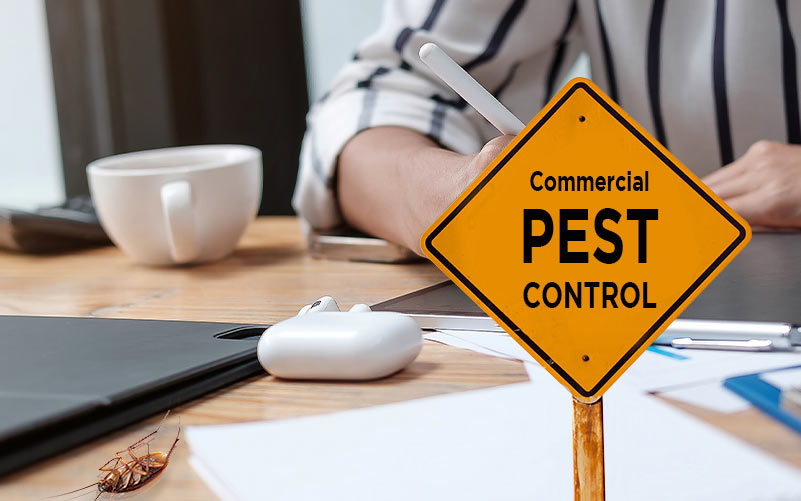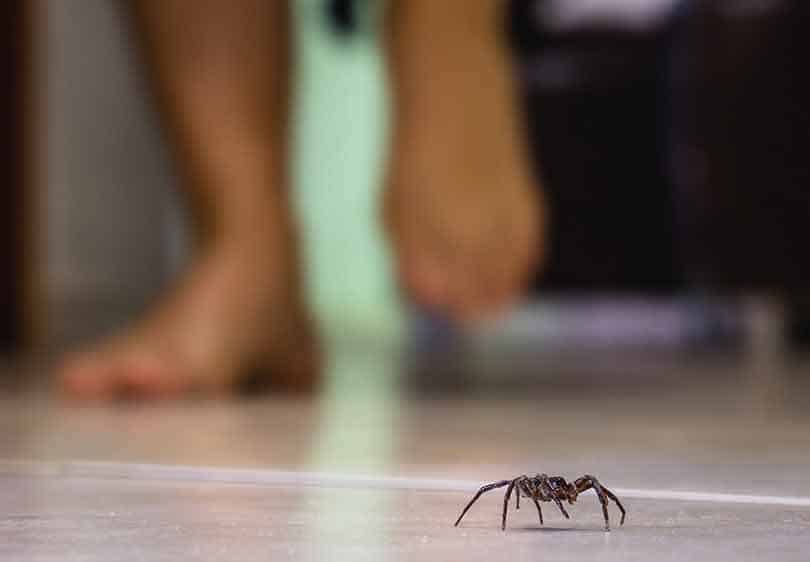Say Goodbye to Unwanted Visitors: Orem Pest Control at Your Solution
Wiki Article
An Insight Into Various Sorts Of Parasite Control Solutions Available in the marketplace
In the world of pest control services, a varied selection of techniques exists to attend to the consistent obstacle of handling unwanted intruders. From standard chemical sprays to innovative biological controls, the marketplace uses a range of options created to match various demands and preferences. As parasites remain to develop and adapt, the need for sustainable and efficient parasite control actions comes to be significantly extremely important. Recognizing the subtleties of each kind of bug control solution can be not just enlightening yet also critical for maintaining an unified coexistence with the environment and the animals that populate it.Chemical Sprays
Chemical sprays are commonly utilized in pest control services to successfully get rid of and prevent infestations. These sprays include numerous chemicals that target particular pests, such as rats, insects, or termites. The energetic components in these sprays work by interrupting the bugs' nerve systems, creating paralysis or death upon call.Professional parasite control services utilize qualified specialists who recognize the correct application of chemical sprays to guarantee optimum effectiveness while minimizing dangers to human beings, family pets, and the environment. These service technicians conduct extensive evaluations to identify the kind of insect infestation and determine the most ideal spray to resolve the problem.
Among the main benefits of making use of chemical sprays in bug control is their capability to give instant outcomes. When used, the spray starts working quickly, minimizing the population of bugs in a prompt fashion. In addition, chemical sprays can provide durable protection versus future invasions when applied on a regular basis as part of a detailed insect monitoring plan.
Biological Control

Timeless biological control includes introducing natural adversaries of the parasite types into the atmosphere. These all-natural opponents, such as microorganisms, killers, or bloodsuckers, help control parasite populaces by taking advantage of or contaminating them. This method is commonly used for long-lasting parasite administration and developing an all-natural equilibrium in the ecosystem.
On the various other hand, augmentative organic control includes launching lots of useful microorganisms, such as predacious bugs or nematodes, to control existing pest populations. This strategy is more immediate and can be particularly beneficial in farming settings to attend to existing bug invasions.
Organic control approaches are preferred for their environmentally pleasant nature, very little influence on non-target varieties, and lowered chemical pesticide usage, making them a lasting parasite monitoring option for various sectors.
Baits and traps

On the various other hand, lures are materials used to bring in parasites to a particular area for control purposes. By comprehending the behavior of the target bug, my company parasite control specialists can efficiently utilize lures and catches to manage insect problems successfully.
Integrated Bug Monitoring
Integrated Parasite Management (IPM) is a detailed method that incorporates various insect click reference control strategies to effectively manage and eliminate bugs while decreasing ecological impact. IPM concentrates on lasting avoidance methods by considering the biology and habits of insects, along with the certain atmosphere in which they exist. This technique integrates a selection of pest control tactics such as biological control, environment control, adjustment of cultural practices, and making use of immune crop ranges.One of the crucial principles of IPM is to prioritize non-chemical bug control approaches whenever possible. This might consist of utilizing natural killers to manage pest populaces or executing physical barriers to avoid invasions. Chemical pesticides are utilized as a last option and are used deliberately to decrease harm to non-target microorganisms and the bordering ecosystem.
Warm Therapy
As a corresponding approach to Integrated Insect Monitoring approaches, heat therapy is a targeted method that uses the power of high temperature levels to eliminate insects effectively and effectively. This technique is specifically helpful in removing bed pests, termites, and other pests that might be hiding in hard-to-reach locations within a framework. By raising the ambient temperature to degrees that are lethal to the insects but safe for the building, warm treatment can permeate cracks, crevices, and furniture where standard chemicals may not reach.Throughout a warmth therapy session, specialized devices is used to heat up the infested area to temperature levels between 120 ° F and 140 ° F, a range recognized to eliminate bugs at all life phases. The procedure commonly takes several hours, making sure that the warm penetrates deep adequate to get rid of the whole pest population. One of the key benefits of warm treatment is that it is chemical-free, making it a safe and ecologically pleasant alternative for pest control. In addition, warmth therapy is known for its ability to offer quick results, commonly solving parasite invasions in a solitary therapy session.
Final Thought
this website
 Having actually attended to the efficiency of chemical sprays in insect control services, the focus currently moves to organic control techniques as a lasting option for handling bug invasions. Lures and traps are important tools in insect control services, providing targeted remedies for particular parasites. By comprehending the behavior of the target parasite, parasite control experts can properly make use of baits and traps to handle insect problems successfully.
Having actually attended to the efficiency of chemical sprays in insect control services, the focus currently moves to organic control techniques as a lasting option for handling bug invasions. Lures and traps are important tools in insect control services, providing targeted remedies for particular parasites. By comprehending the behavior of the target parasite, parasite control experts can properly make use of baits and traps to handle insect problems successfully.Integrated Parasite Administration (IPM) is an extensive technique that combines different insect control methods to properly manage and get rid of parasites while minimizing environmental impact.In verdict, different kinds of bug control services are readily available in the market to address different parasite infestations.
Report this wiki page